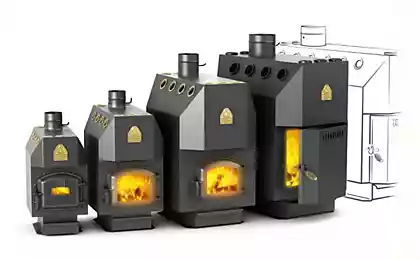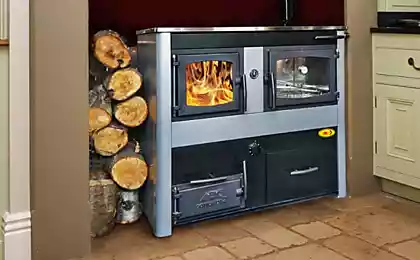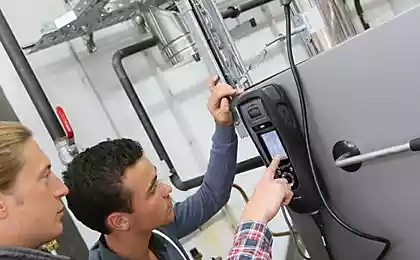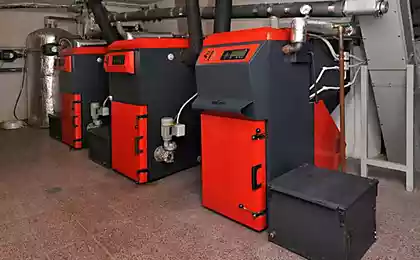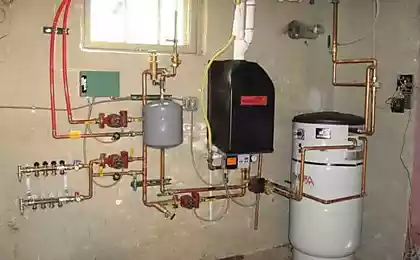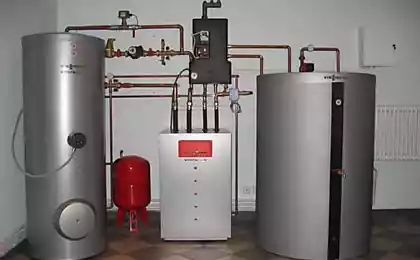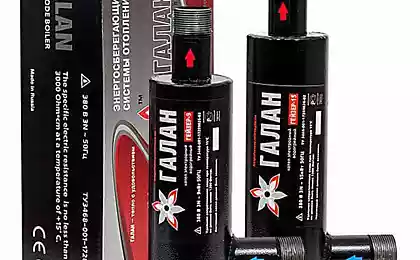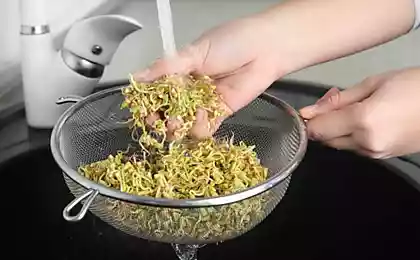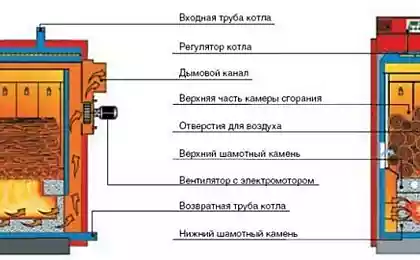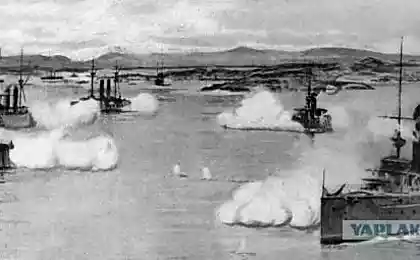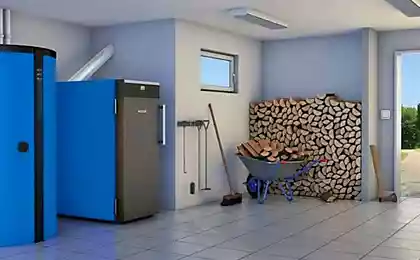476
How to flush the heat exchangers of water-heating boilers
Without proper maintenance and prevention – hot water boilers, heat exchangers fail due to the formation of limescale deposits on the heating elements and built-up in the pipes.
All this reduces the service life of equipment and, as a rule – the equipment stops working during the period of intensive exploitation, that is, in the beginning of the heating season. What equipment fails? Poor water quality, high content of calcium, magnesium, which reduces their heat transfer characteristics and overall performance.
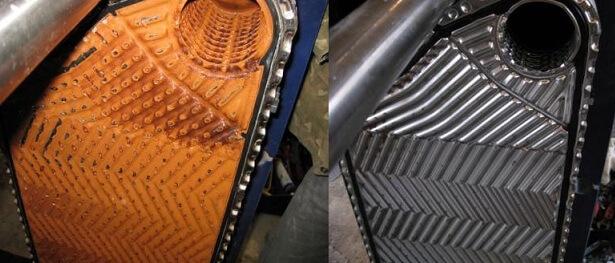
We recommend to carry out preventive maintenance systems annually is a kind of signal about the need for preventive maintenance of the heat exchanger serve weakening of a pressure and the deterioration of heat removal. In this article we will tell you how to carry out the rinsing of the heat exchanger, what pitfalls can occur and what to look for when choosing the necessary equipment for flushing.
The choice of equipment and reagents for washing, what to pay attention
Modern station for CIP washing represent the capacity of a special material, acid resistant circulation pump that supplies reagent for flushing the circuit of the heat exchanger, connecting hoses – with their help, the installation will be connected to the heat exchanger and reagents will be injected inside.

It is very important to determine the purpose of the installation – will you use it for flushing appliances of a boiler or industrial heat exchangers. When answering this question, You'll cut the time for model selection. For example, for washing appliances hot-water units fit compact Cillit SEK 28 has an optimal set of characteristics and has established itself as a reliable professional tool.
Tip:
Equipment for washing should be chosen taking into account the volume of the heat exchanger, which must be washed. The connecting hoses must be user friendly and a long and to have a reliable connection to the heat exchanger (or set of adapters). The hose should be made for the appropriate use of special material – most often it is reinforced PVC. Never use a garden hose or other not intended for rinsing reagents means. The circulation pump is the heart of the installation. Its reliability depends on the lifetime of the washer and its capacity that is an important parameter in the choice. A professional organization engaged in washing of heat exchangers used washing often Italian and German Assembly, because pump reliability and quality of materials. The reagents for washing
Before you buy the reagents, You definitely need to know the material of your boiler or heat exchanger. Not all concentrates are presented on the market is safe to use for equipment, this is due to the materials resistance to the reagents used when flushing. To help, we have created a table for selection of reagents!
Process CIP washing
In this video we will show you an example of a boiler in a country house, the principle of in-place washing of equipment, BWT.
SUBSCRIBE to OUR youtube channel that allows you to watch online, download from YouTube free video about the recovery, the rejuvenation of man. Love for others and ourselves, as the feeling of high vibrations — an important factor for improvement .
Put LIKES and share with your FRIENDS!
www.youtube.com/channel/UCXd71u0w04qcwk32c8kY2BA/videos
Technology of washing of heat transfer equipment both simple and effective:
In addition to a significant increase in the efficiency of all types of heat exchangers, installation and reagents manufacturing concern BWT increase the total time of their operation without damaging plates and gaskets. published
Source: www.forumhouse.ru/articles/engineering-systems/6987
All this reduces the service life of equipment and, as a rule – the equipment stops working during the period of intensive exploitation, that is, in the beginning of the heating season. What equipment fails? Poor water quality, high content of calcium, magnesium, which reduces their heat transfer characteristics and overall performance.

We recommend to carry out preventive maintenance systems annually is a kind of signal about the need for preventive maintenance of the heat exchanger serve weakening of a pressure and the deterioration of heat removal. In this article we will tell you how to carry out the rinsing of the heat exchanger, what pitfalls can occur and what to look for when choosing the necessary equipment for flushing.
The choice of equipment and reagents for washing, what to pay attention
Modern station for CIP washing represent the capacity of a special material, acid resistant circulation pump that supplies reagent for flushing the circuit of the heat exchanger, connecting hoses – with their help, the installation will be connected to the heat exchanger and reagents will be injected inside.

It is very important to determine the purpose of the installation – will you use it for flushing appliances of a boiler or industrial heat exchangers. When answering this question, You'll cut the time for model selection. For example, for washing appliances hot-water units fit compact Cillit SEK 28 has an optimal set of characteristics and has established itself as a reliable professional tool.
Tip:
Equipment for washing should be chosen taking into account the volume of the heat exchanger, which must be washed. The connecting hoses must be user friendly and a long and to have a reliable connection to the heat exchanger (or set of adapters). The hose should be made for the appropriate use of special material – most often it is reinforced PVC. Never use a garden hose or other not intended for rinsing reagents means. The circulation pump is the heart of the installation. Its reliability depends on the lifetime of the washer and its capacity that is an important parameter in the choice. A professional organization engaged in washing of heat exchangers used washing often Italian and German Assembly, because pump reliability and quality of materials. The reagents for washing
Before you buy the reagents, You definitely need to know the material of your boiler or heat exchanger. Not all concentrates are presented on the market is safe to use for equipment, this is due to the materials resistance to the reagents used when flushing. To help, we have created a table for selection of reagents!
Process CIP washing
In this video we will show you an example of a boiler in a country house, the principle of in-place washing of equipment, BWT.
SUBSCRIBE to OUR youtube channel that allows you to watch online, download from YouTube free video about the recovery, the rejuvenation of man. Love for others and ourselves, as the feeling of high vibrations — an important factor for improvement .
Put LIKES and share with your FRIENDS!
www.youtube.com/channel/UCXd71u0w04qcwk32c8kY2BA/videos
Technology of washing of heat transfer equipment both simple and effective:
- Connect the install the sink to the heat exchanger.
- To prepare a solution of the desired reactant and to heat it to a predetermined temperature.
- To include the installation of a sink in a circulation mode in accordance with the instruction manual, use reverse to change the direction of flow for more thorough rinsing.
- To ensure that all precipitate has dissolved (this included a special test sets).
- Neutralize and drain the waste solution.
- Rinse the heat exchanger.
- To disable the installation of the sink from the heat exchanger.
In addition to a significant increase in the efficiency of all types of heat exchangers, installation and reagents manufacturing concern BWT increase the total time of their operation without damaging plates and gaskets. published
Source: www.forumhouse.ru/articles/engineering-systems/6987
